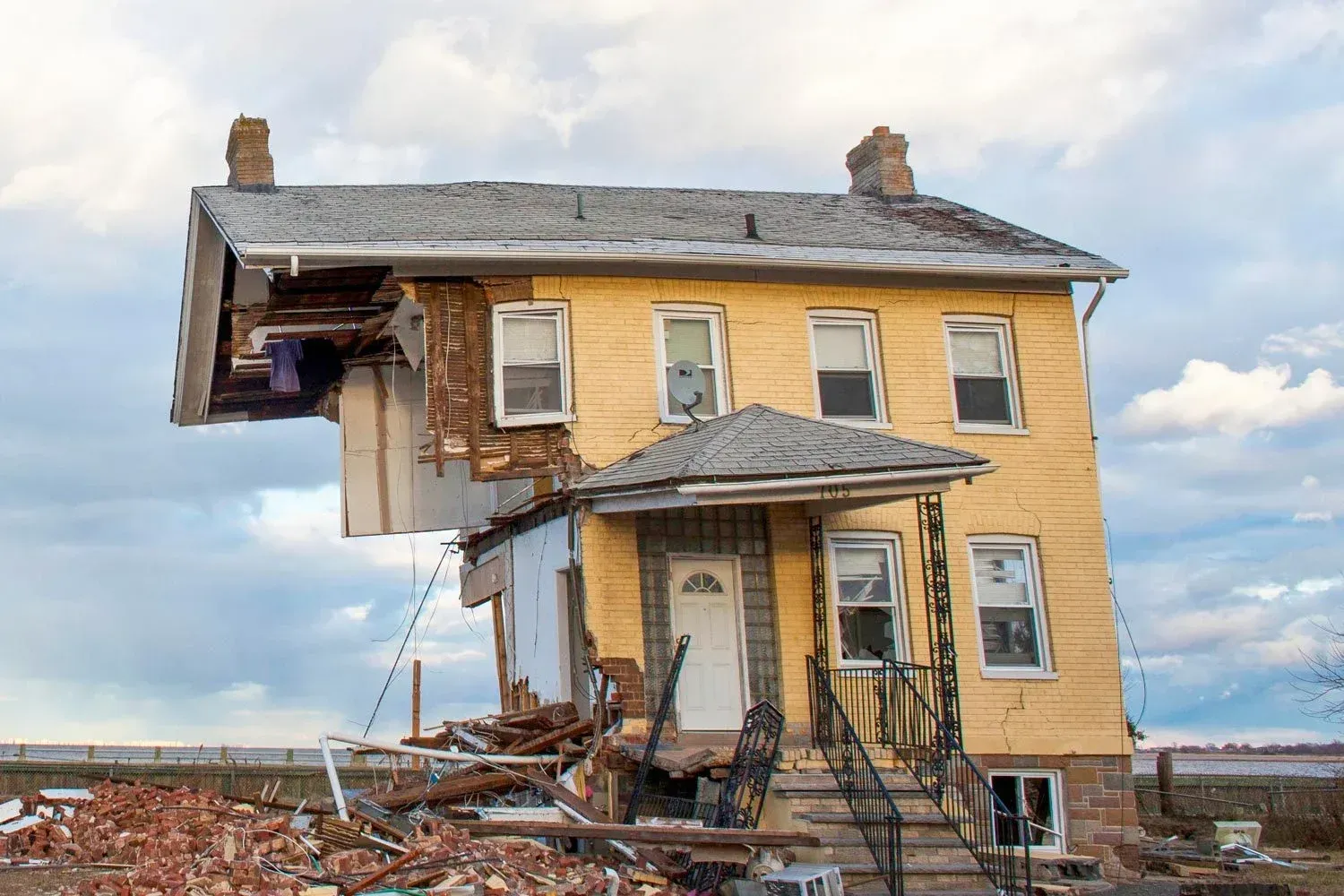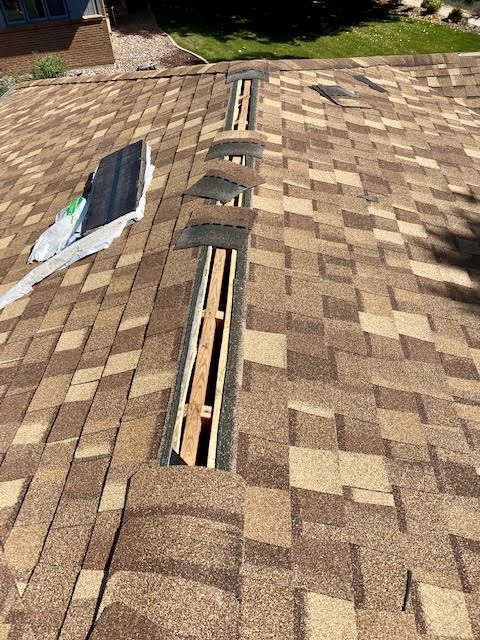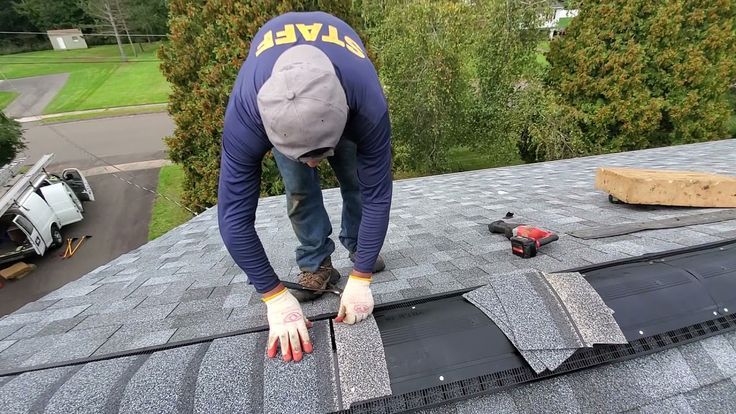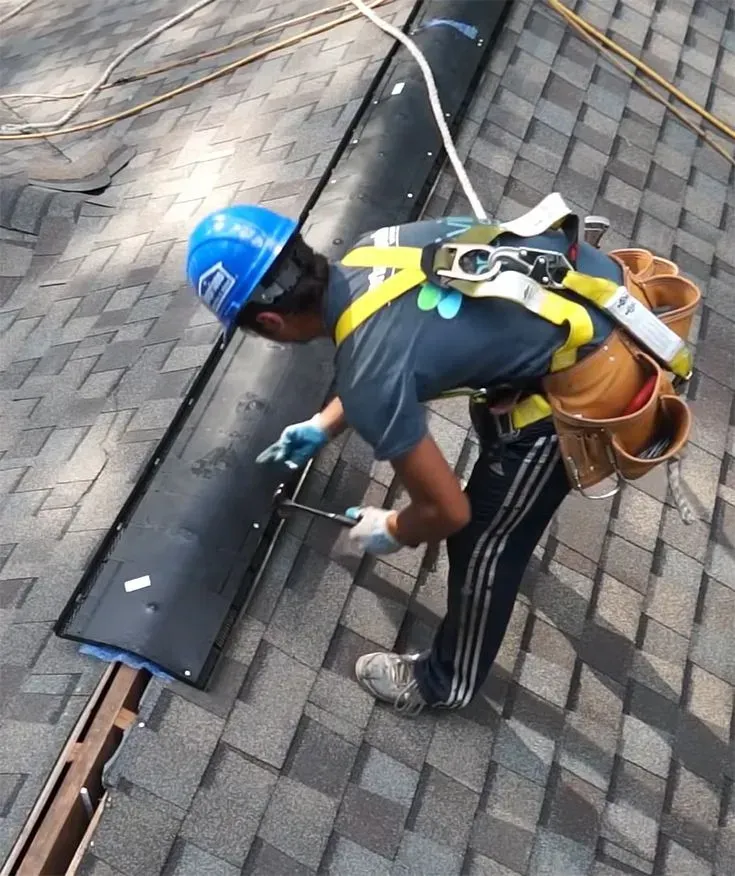Roof Installation Process
Our hurricane-resistant roof installation follows a structured approach to ensure your home stays protected during severe weather events.
1. Initial Assessment
Our team begins with a thorough evaluation of your current roof structure. We inspect for existing damage, weak points, and structural concerns that might compromise a new installation. We measure your roof's dimensions precisely and check the decking condition underneath. This helps us identify any repairs needed before installation begins.
2. Customized Roof Design
Based on our assessment, we develop a tailored roof design that addresses your specific hurricane resistance needs. Our designs incorporate wind-rated materials tested to withstand speeds of 130+ mph.
3. Professional Installation Techniques
Our OSHA-trained technicians apply specialized hurricane-resistant installation methods. We use upgraded fasteners with greater pullout resistance and properly spaced according to wind zone requirements. We install drip edges with additional fasteners and seal them with roof cement. This prevents wind from getting underneath the roofing material and causing uplift.
4. Regular Inspections
We recommend scheduling professional roof inspections at least twice a year—ideally in spring and fall. These regular check-ups help identify potential weaknesses before they become major problems. Our experienced technicians look for loose shingles, damaged flashing, and signs of water intrusion that could compromise your roof during severe weather.
Assessing Existing Structures
Before beginning any hurricane-resistant roof project, we conduct a thorough assessment of your current roof structure. Our team examines the roof deck, support system, and existing materials to identify weak points that could fail during severe weather.
We look for signs of previous water damage, inadequate fastening systems, and aging materials that may compromise your roof's integrity. This assessment includes:
- Inspection of attic ventilation systems
- Evaluation of roof-to-wall connections
- Measurement of deck thickness and quality
- Analysis of existing fastener patterns and types
Our experts use this information to create a customized plan that addresses your home's specific vulnerabilities. We'll explain what we find in clear, simple terms so you understand exactly what needs attention.
Upgrading to Hurricane Standards
Upgrading your roof to meet hurricane standards involves several key improvements that work together to create a stronger system. We follow the latest building codes for high-wind areas and often exceed minimum requirements.
The foundation of a hurricane-resistant roof starts with proper decking. We use thicker plywood or OSB panels and closer nail spacing to prevent deck failure. Our team installs:
- Ring-shank nails instead of standard smooth nails
- Hurricane straps and clips to strengthen roof-to-wall connections
- Enhanced water barriers under roofing materials
- Impact-resistant shingles rated for high winds
We pay special attention to edges and ridges where wind forces are strongest. Our installation methods create a continuous load path from your roof to your home's foundation, dramatically improving wind resistance.
Retrofitting Techniques
If a complete roof replacement isn't needed, we offer targeted retrofitting techniques to strengthen your existing roof against hurricanes. These cost-effective improvements can significantly boost your roof's wind resistance. Our most common retrofitting services include:
- Secondary water barriers - Adding peel-and-stick membranes over your entire deck
- Improved fastening - Reinforcing existing connections with additional hardware
- Ridge strengthening - Installing specialized braces at vulnerable points
- Gable end reinforcement - Adding bracing to prevent collapse of end walls
For homes with older roof designs, we can install hurricane braces in your attic to strengthen the connection between roof trusses and walls. We also recommend sealing all roof deck seams to prevent water intrusion if shingles blow away. These targeted improvements can make your existing roof significantly more resistant to storm damage at a fraction of replacement cost.




